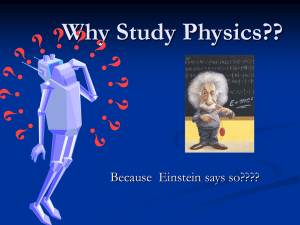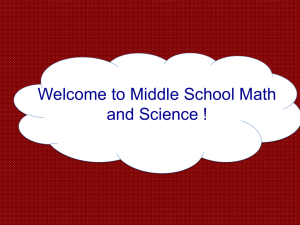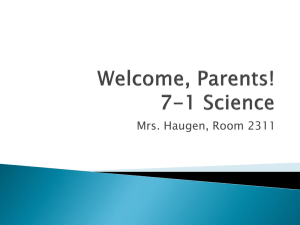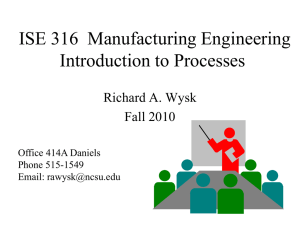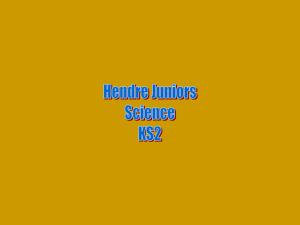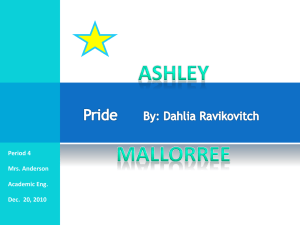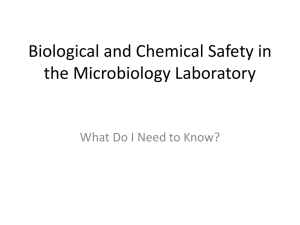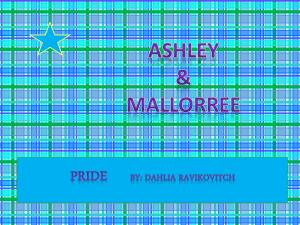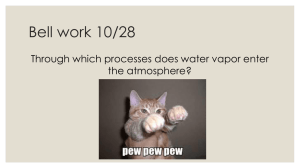View curriculum project as a presentation
advertisement
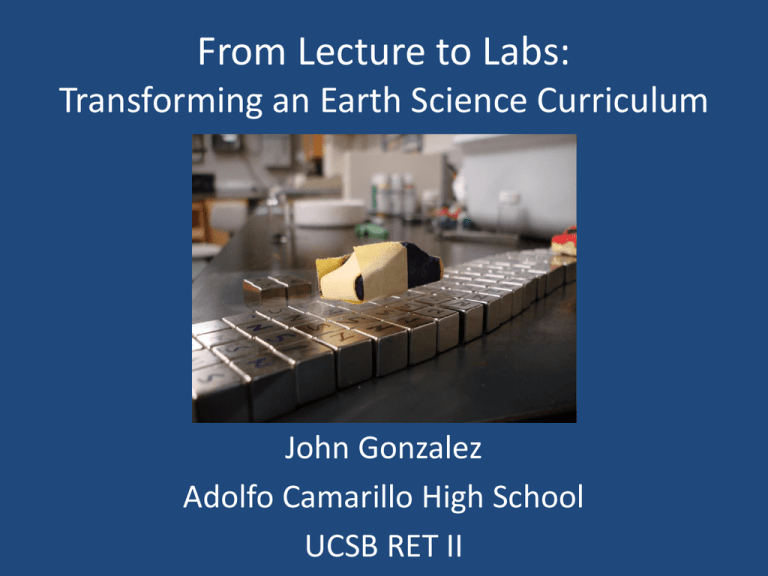
From Lecture to Labs: Transforming an Earth Science Curriculum John Gonzalez Adolfo Camarillo High School UCSB RET II My Research Project Synthesized a high temperature superconductor. Created a track of rare earth magnets My Research Project Craft a vehicle that could house the superconductors, levitate, and move down the track in a controlled fashion. The end product: A tool of education outreach for Professor Ram Seshadri and the MRL Educational Outreach Program. Curriculum Project Evolution • Kept a blog about the process to chronicle my thoughts and experiences. http://gonzalezret.blogspot.com • Working in a lab reinforced two ideas: 1. Real science is done hands-on or minds-on. 2. Doing science is engaging, challenging, and fun. • I wanted to incorporate these lessons into my earth science curriculum. Curriculum Project Evolution (continued) • Earth Science was a new course at ACHS. • Without prior experience, we were creating the course on the fly. • Little time for in-depth lesson design and creativity. • Although effective, the course lacked a consistent hands-on component. • My RET II project: – Develop a standards-based lab curriculum that can be integrated into my earth science course. The Project • At ACHS, we have ten units of study. • There are 17 labs developed for specific units • The labs designed are NOT a parallel curriculum. – The intention is to integrate them within the normal course of the year. • The labs are standards-based and are designed with a few goals in mind. – Promote higher-level thinking. – Provide more access opportunities for lower level students – Build data analysis and lab techniques • NOTE: Not all labs are independently created. I have borrowed from many educators and websites. Summary: Lab Titles by Unit Unit Introduction to Earth Science Lab Title(s) • Measuring Volume • Density of Solid Objects Earth’s Interior & Plate Tectonics • Sea-Floor Spreading • Plate Tectonics Earthquakes & Volcanoes • Virtual Earthquake (CL) •eField Trip to Hawaiian Isls. (CL) Rocks & Minerals • This Planet Really Rocks (CL) •Classifying Rocks California Geology & Hazards • Rock’n Roller Coaster • Household Water Use Summary: Lab Titles by Unit Unit Lab Title(s) Oceanography •Properties of Ocean Water Biogeochemical Cycles & Atmosphere •The Carbon Cycle Game (CL) •Hot Air Extraordinaire (CL) Energy in Earth’s System •Heating Land & Water Climate & Climate Change Astronomy The Global Warming Debate (CL or paper) •Terrestrial vs. Jovian Planets •Life Cycle of Stars (CL) Each Lab Includes… • Student Handouts • Additional versions with scaffolding for learning needs • Any applicable resources necessary for completion (except raw materials) • Teacher Page – CA Content standards (ES & I/E) – Learning objectives – Content Area Vocabulary & Pre-Requisite Concepts – Academic Language (forms, functions and/or fluency) – Possible ideas for extension – Tips & Suggestions regarding successful implementation Examples: Writing in Science Google Maps R.J. Henchy (Rio Mesa HS) Examples: Writing in Science • The Global Warming Debate “The President has appointed YOU to be on his Global Warming Planning Committee. Your task will be to 1) inform him about the basic science of global warming, 2) read and review articles relating to global warming, 3) and finally, your opinion matters, the President will be relying on the GWPC to inform him of its findings so that he can develop proper policies that are in the best interests of the nation and the world.” Examples: Computer Lab Activities • Virtual Earthquake (click here) • eField Trip to the Hawaiian Islands (click here) • Hot Air Extraordinaire (click here) • The Carbon Cycle Game (click here) • Life Cycles of Stars (click here) Examples: Labs & Data Analysis • Sea-Floor Spreading & Paleo-magnetism http://www.geosociety.org/educate/LessonPlans/SeaFloorSpreading.pdf • Properties of Ocean Water F. Kinnaman (citation on the way) Examples: Labs & Data Analysis • Terrestrial vs. Jovian Planets – Sort nine generic planets into two groups based on given data. • Classifying Rocks – Evaluate the crystal size of two igneous rocks and determine which is intrusive & which is extrusive. – Given three rocks, evaluate their physical appearances to determine which is igneous, sedimentary & metamorphic. Scaffolding Handouts: Why: • Acquiring content proficiency is more important than how it gets acquired. • Remove linguistic and processing difficulties as barriers to engaging with the content. What I Did: • Provide sentence frames, graphic organizers, premade graphs & data tables. Scaffolding Handouts: Examples: • Heating the Land and Water – General (here) – Scaffolded (here) • eField Trip to the Hawaiian Islands – General (here) – Scaffolded (here) • Density of Solid Objects – General (here) – Scaffolded (here) Extension Ideas: • Provide opportunities for accelerated learners to extend their engagement with the material. • Try to remove the reward for “getting done”. Examples: • Rock’n Roller Coaster – Research ways to mitigate some of the hazard risks at a given site and incorporate those findings into their proposal. • Classifying Rocks – Provide students with a chart for specifically identifying rocks (e.g. granite vs. basalt) Assessment of Student Work: Two forms: 1. Each lab has accompanying analysis questions or outcomes for which students are responsible. 2. Labs were designed to be integrated into normal curriculum. Regular unit assessments will help to determine how well students acquired proficiency with the given concepts of the lab. Assessment of Project Implementation: • Take notes during lab execution • Modify labs as needed for greater effectiveness • Expand tips & suggestions Student Outcomes • At ACHS, the ES team has a set of common formative assessments. • Use Edusoft to grade tests & evaluate data. • Compare test data from a “lab-less” course in 08-09 to this year’s data with an integral lab curriculum. Thank You! Dr. Martina Michenfelder Dr. Frank Kinnaman Dr. Ram Seshadri The entire MRL & Education Outreach staff USCB National Science Foundation
